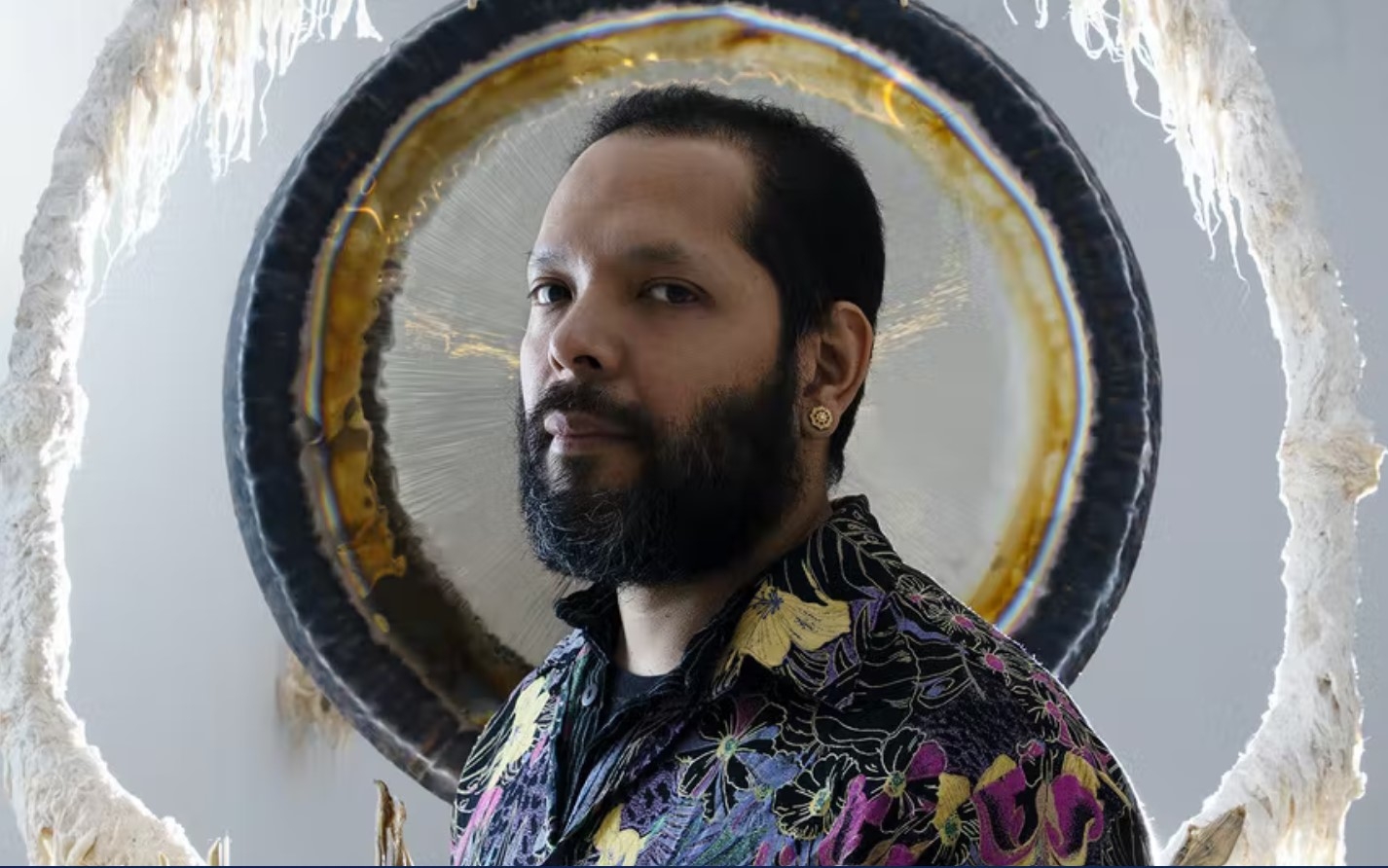The exhibition title Sound Botánica uses a reference to small, specialized shops that are internationally called “botanica”. They sell herbs and other traditional medicines along with candles, incense and other objects.
Several personal events in Maravilla’s life have had a major impact on his art. In 1984, at the age of eight, Maravilla immigrated to the United States as a single, undocumented refugee. He was on the run from the civil war in El Salvador. In adulthood, he was diagnosed with cancer and underwent chemotherapy and radiation therapy. To alleviate the side effects, he combined the treatment with other healing practices such as sound baths. The artist’s interdisciplinary practice constantly refers to experiences with exile and illness, migration and healing.
The exhibition in Norway presents a selection of works from Maravilla’s art:
Disease Throwersis a series of free-standing sculptures made of objects and materials Maravilla collected when he as an adult sought out the journey he made when he fled the war. Several of these sculptures will be shown in the exhibition. In the heart of each individual sculpture, he has placed a gong that at certain times during the exhibition period will be activated during a sound bath. According to the artist, these events will be collective, ritual and meditative healing experiences for the audience.
Tripa Chuca, which is a reference to a Salvadoran game. Maravilla played this in childhood and while fleeing. The series is also represented with a site-specific work by Henie Onstad, where Maravilla “plays out” the play in collaboration with a previously undocumented person. In these drawings, Maravilla directly deals with the theme of migration and its own immigration history.
In the series Embroideries , Maravilla condenses the thematic elements found in his drawings. Each embroidered work shows disembodied limbs, hands and clenched fists with dripping ice blocks (a reference to ICE, US Immigration and Customs Enforcement), skulls and a hand that sows seeds. These are fictional, contemporary emblems created by the artist to symbolize resistance to persecution, by, and political pressure on, undocumented immigrants.
Retablos is a popular and religious art form within the genre called “ex-voto” paintings. It is a popular art form traditionally used to express gratitude for surviving dangerous events. In Maravilla’s retables, and in the long inscriptions he has written on each of them, the artist expresses gratitude for, among other things, a new chance in life after cancer treatment, which has made it possible for him to continue as an artist.
The exhibition is presented with an extensive catalog. This is one of the first publications to present Guadalupe Maravilla’s work. It contains new essays by Michelle Kuo, danilo machado and Allie Tepper, a curatorial essay by Caroline Ugelstad, foreword by Tone Hansen and Paulina Rider Wilhelmsen, as well as a conversation between the artist and DiyaVij.
Guadalupe Maravilla is the recipient of the Lise Wilhelmsen Art Award 2021.




